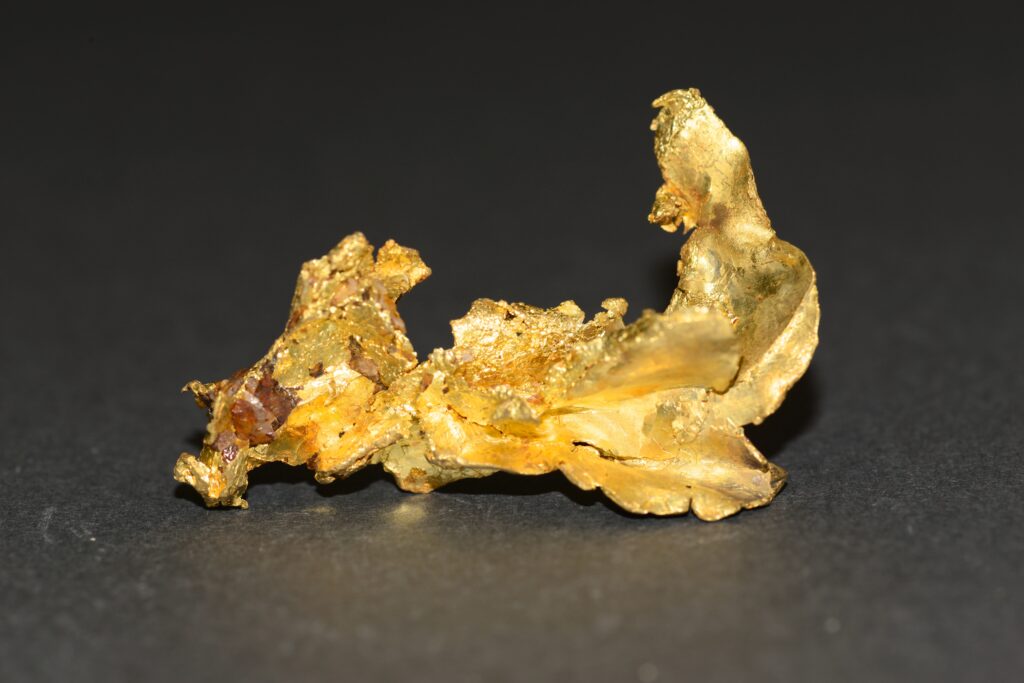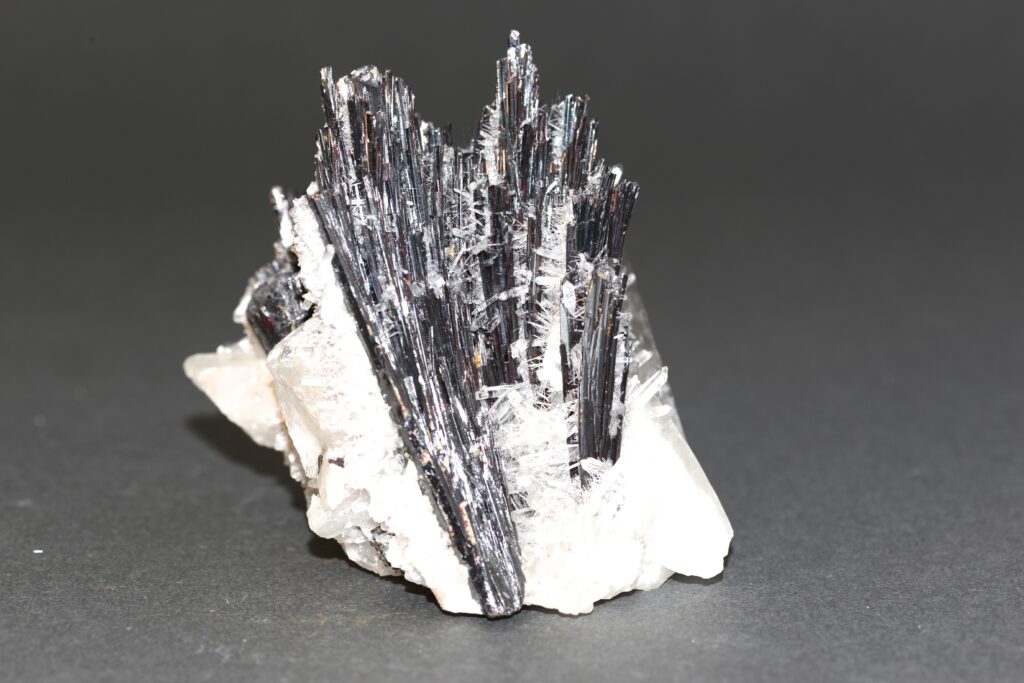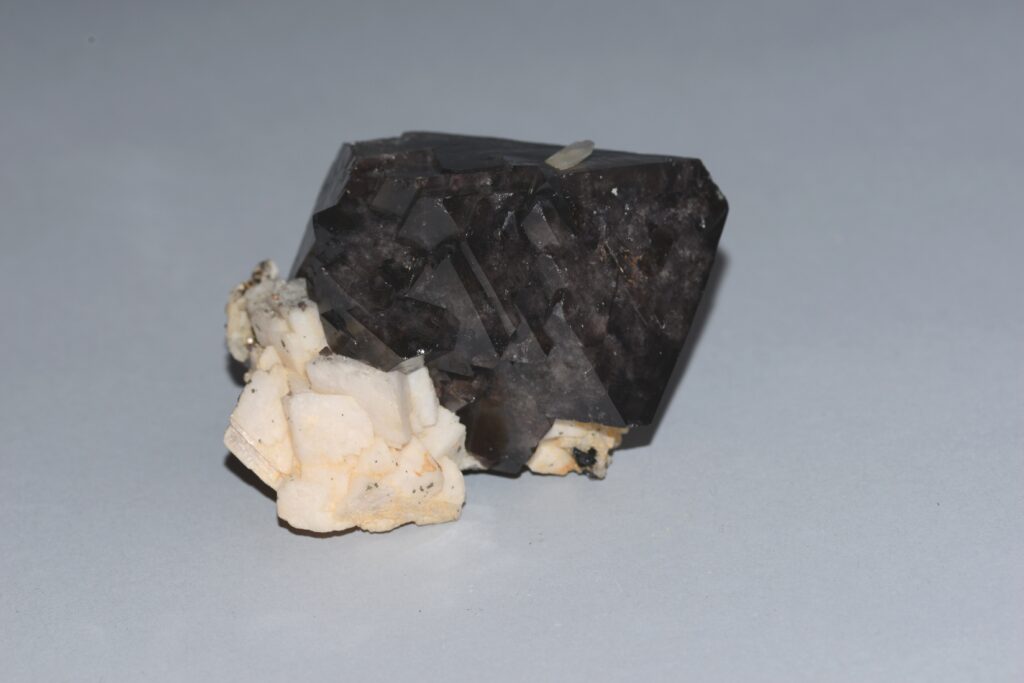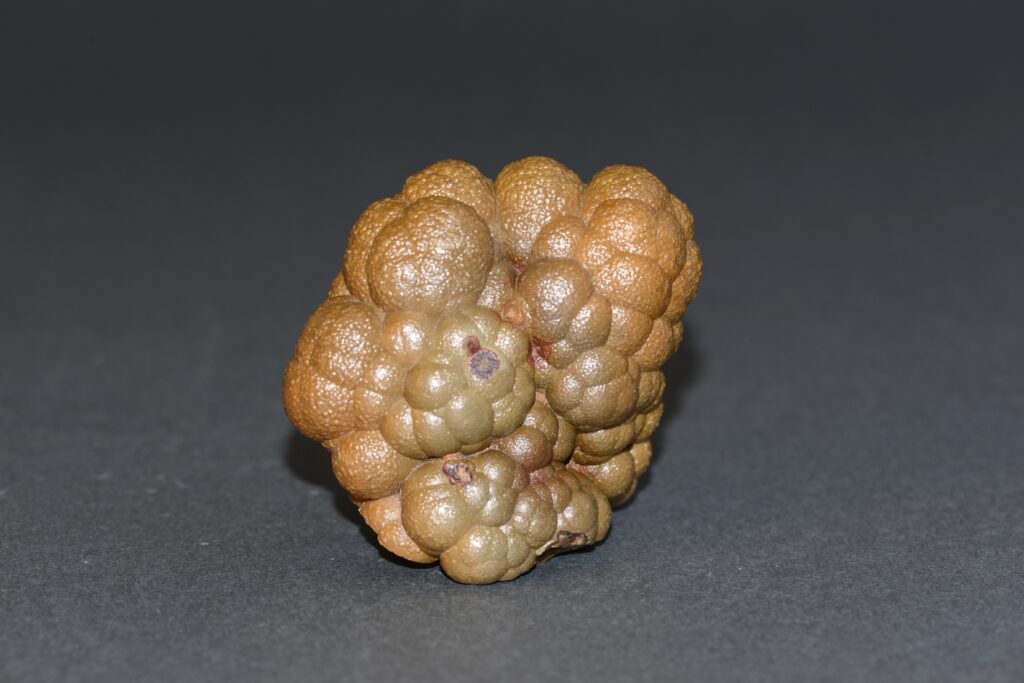Conflict Mineral Display
The Securities and Exchange Commission (SEC) has designated the four elements tantalum, tin, tungsten, and gold as conflict minerals. These conflict minerals have in some cases been used to fund armed conflicts or have been mined by forced labor. In fact, only gold – the focus of the MINE exhibition – is found as a mineral and the others occur as components of minerals, from which they must be extracted. The minerals shown in this case that are mined for these elements are columbite-tantalite (tantalum), cassiterite (tin), wolframite and scheelite (tungsten), and gold. The fine crystalline specimens shown are not typical of the material mined which is commonly fine grained or massive. There is no doubt that mining in the Amazon basin has been environmentally destructive to the land and the people. However, not all mining, if properly regulated, has great impact on the environment.
The primary source for many of these minerals is the Democratic Republic of Congo, although the neighboring countries further down the supply chain often pass on, knowingly or unknowingly, DRC material. These materials are used in tools, electronics, aerospace, jewelry and all of them are used in cell phones.

Gold

Wolframite
Wolframite (tungsten)
San Cristobal Mine, Yauli District, Junin, Peru

Scheelite
Scheelite (tungsten)
Tae Hwa Mine, Chungju City, North Chungcheong Province, South Korea

Cassiterite
Cassiterite (tin)
Santa Maria del Oro, Durango, Mexico